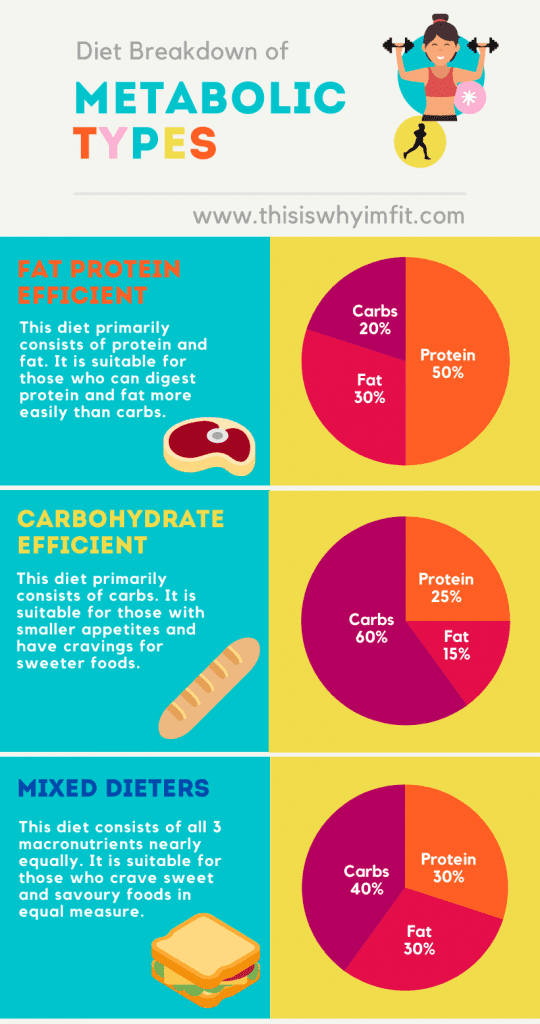
The best online fitness resource you'll ever need. We filter out the BS to ensure you meet your health and fitness goals!

The best online fitness resource you'll ever need. We filter out the BS to ensure you meet your health and fitness goals!

In a nutshell, some people who are more efficient at digesting fat and protein than others are fat protein efficient.
Diets work differently for different people. What gives you amazing results might be awful for your best friend. What allows your colleague to recomp successfully could leave you feeling ill, without giving you any benefits at all.
There are many different reasons for this- many known, many unknown, as variables mix and match in complex and glorious ways.
However, there are some things we can find out relatively easily. For example, have you ever tried a ketogenic diet, cutting out carbs almost completely and living on fat and protein? Did it work perfectly for you, where you’ve read numerous reports of other people hating life whilst trying to follow it? Or was it dreadful, where your training partner has found a new lease of life on it?
The difference could hinge on whether or not you are fat protein efficient. If you are, keto will be great. If not… it will most likely suck as you try to cut out much-needed carbs.
Not everybody knows what the term ‘fat protein efficient’ means- even die-hard fitness buffs don’t pay it much attention, even if it has come onto their radar.
Fat protein efficiency is connected to metabolic typing. This is a dietary style that takes individual digesting differences across food groups into account.
To be honest, we’re kind of getting into the nitty gritty of training wisdom here. However, it’s important- by the time you’ve finished this article, you may have found the answers you’ve been looking for as you’ve struggled to make any progression in the gym.
The metabolic typing diet has actually been around for nearly a century, first gaining traction under Weston Price in the 1930s.
It follows the idea that everybody’s body is different in how efficiently it metabolises fat, protein and carbohydrates: the three different macronutrients. These differences will relate to things like genetics and body type, lifestyle and athletic needs, and the reactivity of their parasympathetic and sympathetic nervous systems.
With a better idea of your own individual metabolic type, you will be able to better structure your macronutrient intake for maximum efficiency. In a nutshell, some people will be more efficient at digesting fat and protein than others: they are fat protein efficient.
But what metabolic type are you?

You may well be fat protein efficient. You also may not be- many aren’t. That’s OK- fat protein efficient is only one type. There are three in total.
This being said, though each metabolic type is characterised by the individual’s rate of digestion of protein, fats and carbohydrates, we all need the same nutrition.
We all typically need a good mixture of all three macronutrients to maintain optimal health and fitness- this discussion is more to do with emphasis than any kind of exclusionary process. If you are a fast oxidiser, you still need carbs, especially in the form of fibre. If you’re a slow oxidiser, you still need fats and proteins. How you weight them is all that changes.
In addition, there is no way to know somebody’s individual metabolic type for sure. Everything above is largely built on conjecture and observation- no actual test can be conducted to give you concrete answers. Mostly, it’s a case of playing around with different macronutrient ratios to see which style:
To help with this, there are a range of tests in which a series of questions are posed to you. how you answer will help you to figure out which metabolic category you most likely fall into. These tests can be found online, with one of the most popular being Wolcott and Fahey’s The Metabolic Typing Diet.
Alternatively, a licensed nutritionist or healthcare provider should be able to help out, giving you similar assessments to these in conjunction with various blood and urine tests that may help to clarify the picture a little.

An eating plan arising from this kind of probing and consultation will be almost perfectly tailored to your individual needs, at least after the initial trial and error.
It will allow you to hit your strengths and weaknesses and will most likely allow to you maintain satiation more easily whilst seeing better results and higher energy levels than a cookie cutter diet might offer.
Though this process of trial and error is vital to maximising your dietary intake, there are some rough and ready guidelines to the macronutrient breakdowns that each metabolic type should eat in a given day.
These are:
For fat protein efficient people:
For carbohydrate efficient people:
Mixed dieters should, perhaps unsurprisingly, take a fairly even mix of all three.

All metabolic types should take their macronutrients, in whatever quantities are appropriate, from similar sources. Just because somebody is fat protein efficient, doesn’t mean they should be eating fried food. Just because somebody is carbohydrate efficient, doesn’t mean they should be eating tons of sugar.
Good protein sources include lean meat, poultry, seafood, eggs and supplements like whey isolate. For carbohydrates, look to fruits, vegetables and whole grains, including plenty of fibre. Most fat should be in the form of oils and natural fats, with good sources including butter alongside plant sources like nuts, olives and avocados.
If somebody can take the majority of their macronutrients from these kinds of sources, no matter the ratios they are looking at, they can be said to be following a fairly healthy eating plan.
This being said, there will be blended types of foods that will be more relevant to fat protein efficient metabolic types. High-fat, high protein sources are obviously perfect. These can include sources like:
In addition, for carbohydrate sources, a fat protein efficient metabolic type will want to steer clear of starchy and simple sources, far more so than a carbohydrate efficient type might.
As mentioned above, whole grain sources and plant sources like fruit and vegetables can be perfect. Amongst these, low sugar, low starch, high fibre ingredients like asparagus, beans, celery and cauliflower are perfect, as well as the fattier vegetables like avocados and olives.
So, if you’re fat protein efficient, looking to follow a metabolic typing breakdown, what will a typical meal look like?
A good breakfast will include high-fat, high-protein, low carb sources, naturally. This could be something like:
The same rules apply for lunch and dinner, so let’s go with something like:
Get inventive or go for classics- either way, there is plenty to choose from.
There are, however, some definite downsides to eating for your metabolic type, unless you are a mixed dieter. Any restrictive diet will possess downsides like these. On either a fat protein or carbohydrate efficient eating plan, a balanced macronutrient profile will be harder to achieve.
Balanced macronutrient breakdowns can often be the most efficient for weight loss, will usually be more sustainable than more restrictive eating plans, and will usually lead to a greater level of satisfaction with fewer binge episodes.
Forcing any macronutrient to the background can be harmful.
Limiting carbohydrate intake in anybody will also limit fibre intake, as fibre is the indigestible component of carbs. This will often lead to digestive issues, as fibre is vital to the digestive process’ healthy functioning. It may also lead to high cholesterol and blood pressure. An absence of carbohydrates can also lead to sluggishness, as the human brain needs carbs to function properly.
On the other side, limiting protein or fat can be harmful. Athletic recovery, hypertrophy, and the maintenance of normal hormonal functions are all reliant on sufficient protein intake. Micronutrient absorption and muscular and skeletal health all rely on sufficient fat intake.
There is also the flawed nature of the typing diet itself. It is largely guesswork, a process of trial and error, with little scientific backing in the formation of anybody’s individual eating plan. It is easy to get wrong and hard to get right, and the process can be draining as you continually switch around and monitor macronutrient ratios over a matter of months or even years.
The metabolic typing diet gives us some valuable lessons. Don’t go for hard and fast rules; don’t follow cookie cutter diets. If you need to find something that works for you, go for trial and error and build a macronutrient plan around observation.
However, for a fully individualised plan, it may be better to go with a nutritionist. They will make sure that you get everything you need, in the quantities you need, without missing any vital nutrients. They will be able to do so scientifically, with best practice and good guidance, and will be able to truly find the shortest, healthiest, most efficient route to your health and fitness goals.